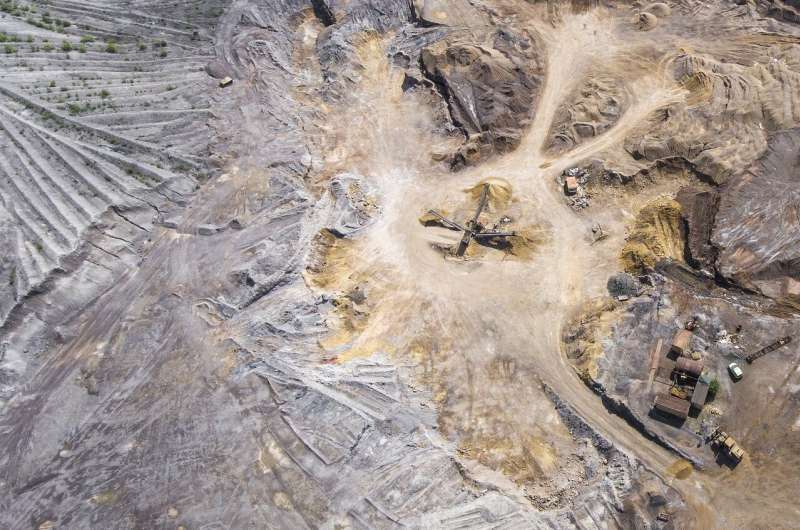Why the energy transition won't be green until mine waste disasters are prevented

, contamination in the Kafue river, Zambia, led to a mass death of fish. Its water turned a deathly gray and adjacent farmland was poisoned. The drinking water it supplied to half a million residents of the town of Kitwe was suddenly cut off.
Reports suggest that this catastrophe was caused by the . Tailings are mixed liquid-solid mine wastes that remain after the valuable materials are removed from the crushed ores.
They are often stored in impoundments, held in place by dams made of rock (and other mine waste), that ideally are managed and kept safe. This storage is necessary because tailings often contain .
But tailings storage facilities can and do fail. The Chambishi failure was caused by a break in a wall between two tailings ponds containing acidic water. , equivalent to 20,000 Olympic swimming pools, spilled into a tributary of the Kafue river, and then into the river itself.
The Kafue is a lifeline, flowing through of Zambia, providing water for and supporting fishing and agriculture. That lifeline is still threatened by the ongoing damage of this failure.
Chambishi is not alone. It is one of , with others documented in Bolivia, Ghana, Philippines and Indonesia.
Tailings and transitions
Tailings are a product of society's voracious appetite for metals and materials. With growing demand for technologies for the energy transition, digitalization and development, production of metals and materials and the volumes of tailings are set to vastly increase.
Identifying suitable sites for safe storage is likely to become more challenging. Space will become more of a premium as more tailings are produced, and risks will evolve with changing climate and a growing global population. For instance, storage facility plans developed before mining begins may no longer be suitable for their intended use over the life of the operation.
The ability to safely store and manage tailings is a key factor in the development of metals projects. By extension, that's fundamental to enabling an equitable and responsible energy transition.
Initiatives to improve the management and monitoring of tailings, developed by independent organizations and industry bodies, such as the and the . Although these initiatives are comprehensive, they do not minimize risks from past tailings storage practices or address the full costs involved.
A broad range of technical, social and environmental uncertainties have been linked to the management of tailings storage facilities. These uncertainties, combined with financial practices such as discounting future costs, can result in future costs (such as long-term tailings management and rehabilitation) being underestimated in mining project cash flows, and .
Without a full understanding of the true long-term costs, making the economic case for improved tailings management becomes that much harder.
Reducing risks and improving outcomes
Improved mechanisms for quantifying the cost of tailings in the short, medium and long term, whether tailings storage facilities fail or not, are essential for adequately financing these long-term legacies of mining. Mechanisms to reduce volumes of waste produced not only have the potential to improve project economics over the lifetime of a mine but can also enhance social and environmental outcomes both during and beyond the life of a mine.
Tailings can be used as sources of aggregate materials for construction and critical metals for the green transition, and for carbon capture and storage. These opportunities will be context specific, however, and there will not be a one-size-fits-all approach to tailings reduction and responsible management.
New mining paradigms, such as selective mining through or and , may give us the ability to extract some metals without producing tailings.
Innovations in tailings storage, like using tailings to fill worked-out underground mining tunnels, can remove tailings from the surface environment, eliminating risk from landslides, dust, seepages and other hazards. Even with these efforts, tailings storage facilities will continue to be used and will need to be managed.
Reducing, reclaiming and regenerating the environments that have been negatively affected by tailings will require collaborative approaches. Financing is a clear barrier to responsible tailings management. Without knowing the true social, environmental and economic costs of tailings legacies, the ability to overcome this barrier to responsible management is hampered.
Provided by The Conversation
This article is republished from under a Creative Commons license. Read the .![]()



















